Three data objectives for marketing success in 2022
THE ARTICLES ON THESE PAGES ARE PRODUCED BY BUSINESS REPORTER, WHICH TAKES SOLE RESPONSIBILITY FOR THE CONTENTS

ZEOTAPis a Business Reporter client
As we head into a new year, it’s an exciting time to be the kind of marketer that sees the discipline of marketing as a science as much as an art. With consumers interacting with brands across an ever-widening spectrum of touchpoints, marketers have near-infinite opportunities to harness data to understand their customers better than ever.
But there’s an elephant in the room here – despite the riches available to us, marketing is far short of being the data-driven discipline that it could be. In fact, Capgemini’s recent CMO report indicated that only 11 per cent of marketers could call themselves “data-driven” – a fairly damning indictment. So what happened here, and is it set to change going into 2022? More to the point, what should you be looking to do to get ahead of the curve this year?
New year, new landscape?
It’s no secret that Covid-19 has impacted marketing efforts across the board, and advances in data discipline were among the hardest hit. Budget cuts meant the kind of infrastructural projects needed to advance a data-driven agenda were paused or cut, and unpredictability meant that marketing strategies that were trending towards the data-driven were often thrown out in favour of mass-marketing tactics, as circumstances changed rapidly and marketers struggled to react. Overall, the disruption to working patterns, office hours and team culture meant that the kind of agile work environment needed to work with data was often put on pause.
So with the pandemic (hopefully) on the way out, are we set for a new era of data-driven marketing? Maybe.
It’s important to remember that when it comes to lack of innovation in data, Covid is not the whole story: as important has been the rising tide of privacy. With regulations such as GDPR, ePrivacy and CCPA being introduced almost daily, marketers around the world are feeling the pressure and slowing their progress towards becoming a data-driven function.
So what happens now?
Identifying what to do next
To identify what the new starting line looks like going into 2022, we commissioned a survey of 500 senior marketers with the aim of showing how different data practices correlate with overall marketing success. Respondents were initially asked how far above (or below) they achieved on their 2021 targets as a measure of their success. According to their attainment, they were then sorted into five distinct success archetypes:
- The Top 1 per cent: Achieved between 70-100 per cent above target
- The Overachievers: Achieved between 30-60 per cent above target
- The Moderate Marketers: Achieved target or exceeded it by 20 per cent
- The Struggling Marketers: Achieved between 10-50 per cent below their target
- The Bottom-Tier Marketers: Achieved between 60-100 per cent below their target or lower
The respondents were then asked questions designed to analyse the degrees by which they leverage customer data, and these responses were indexed against their success. By studying what the most successful marketers are doing with their data, we’ve produced three key objectives that everyone should look to achieve in 2022 in order to stay ahead of the pack.
1. Achieve a single view of the customer by the end of the year
For many, the single customer view is the holy grail of marketing – it requires painstaking unification of dozens (perhaps hundreds) of data sources, which is an organisation-wide challenge. Research showed that the more successful the marketer, the more likely they are to have a golden record – and adoption of a single customer view falls of a cliff when we begin to look at less successful marketers:
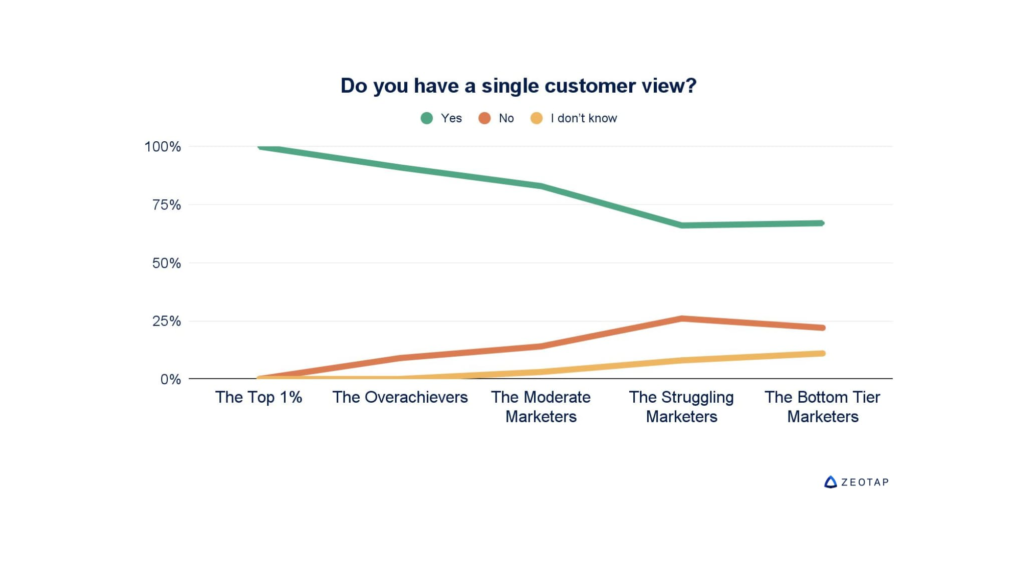
But while the most successful marketers are ahead of the pack in terms of unifying their data into one single customer view, it won’t be long before other marketers catch up to them. Of the marketers who’ve yet to achieve a single customer view, they expect to do so before the end of 2022:
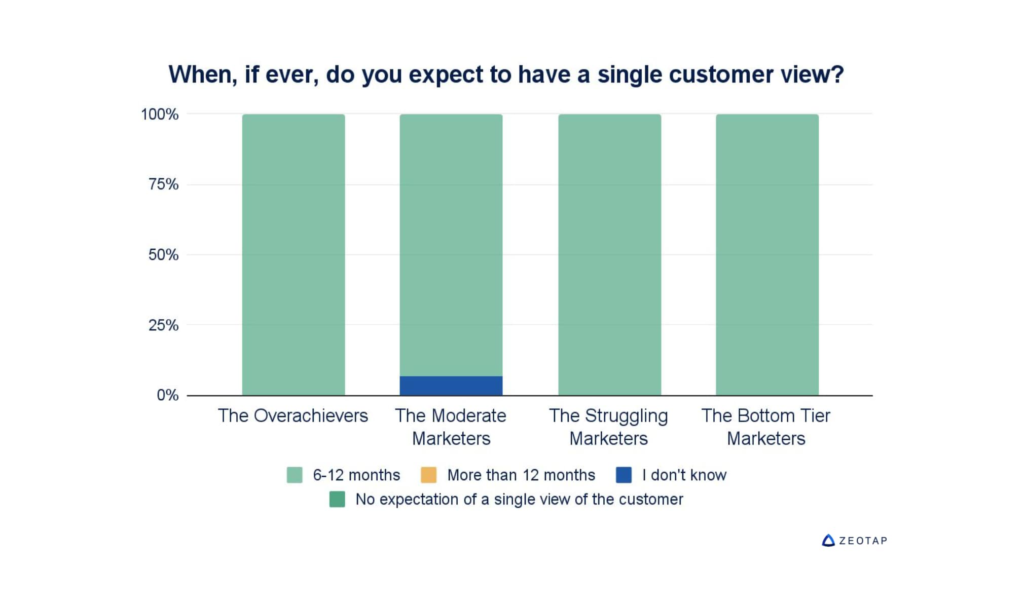
This timeline sends a clear message that this first, foundational stage of the race for data-driven marketing is very nearly over.
2. Get a CDP (and maybe trade in your DMP)
Customer Data Platforms (CDPs) saw an incredible surge in adoption in 2021, with the industry reaching an estimated $1.6 billion in revenue. In looking at their relationship to marketing success, the research was clear: the more successful marketers have already begun making the shift to CDPs.
CDP adoption yielded a 39 per cent increase between the least and most successful marketers –the biggest jump out of the five platforms surveyed. And while the most successful marketers transition to CDPs, the less successful marketers continue to cling to platforms such as DMPs. The latter primarily rely on third-party data, retain data for shorter periods of time, and are unable to identify users to create the most accurate audiences possible the way a CDP can.
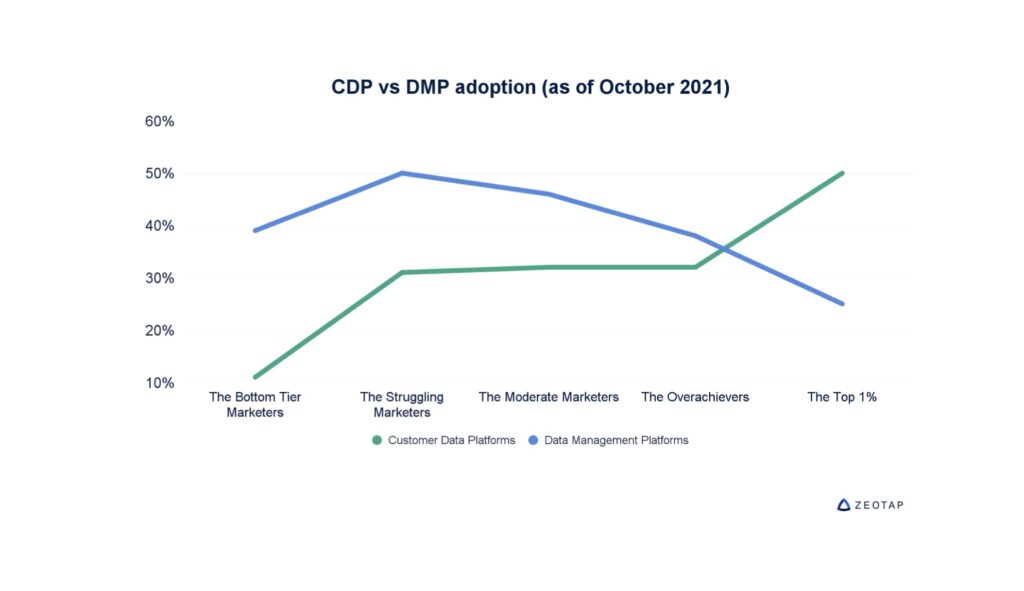
Other data-related technologies show an interesting variance in adoption. Data warehouses and marketing automation platforms both show higher adoption rates across all segments – the fact that neither of these see a drop as CDPs become more common reflects how CDPs function to integrate with these technologies as sources, rather than replace them.
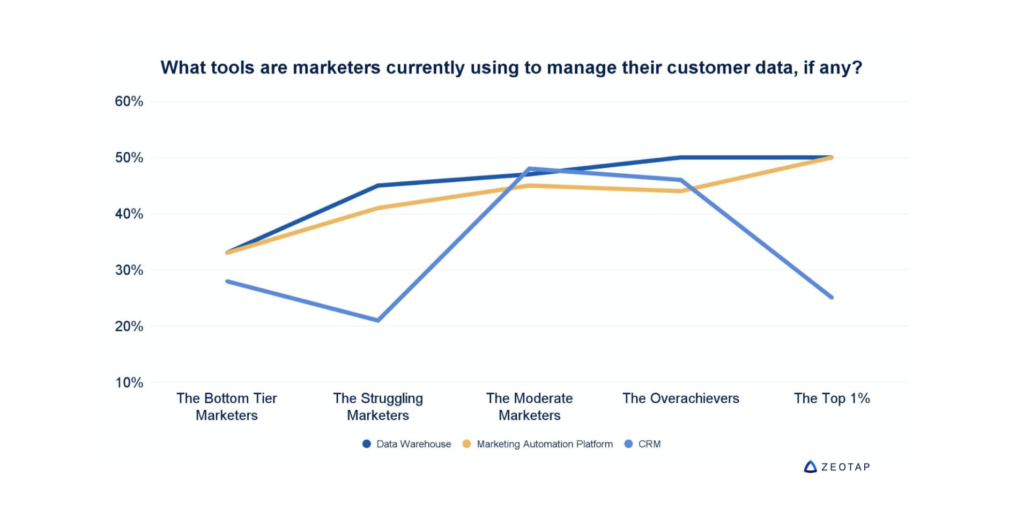
However, all of this should be seen in the context that overall data technology adoption has a long way to go – the highest adoption rates level out at around 50 per cent, meaning that those marketers who intend to achieve a single customer view in 2022 will need to move quickly to bring the right stack on board.
3. Get confident (but not overconfident) in data privacy
Third-party cookie deprecation is just one data fire marketers have to put out. Ever since the introduction of new data regulations such as GDPR and CCPA, marketers have faced a huge challenge in how to capture, store and use customer data in a way that doesn’t fall foul of the law.
But there’s good – and perhaps surprising – news here. Across the board, marketers have exhibited a high level of confidence in the compliance standards of their data practices, with nearly 100 per cent confidence among the front-runners:
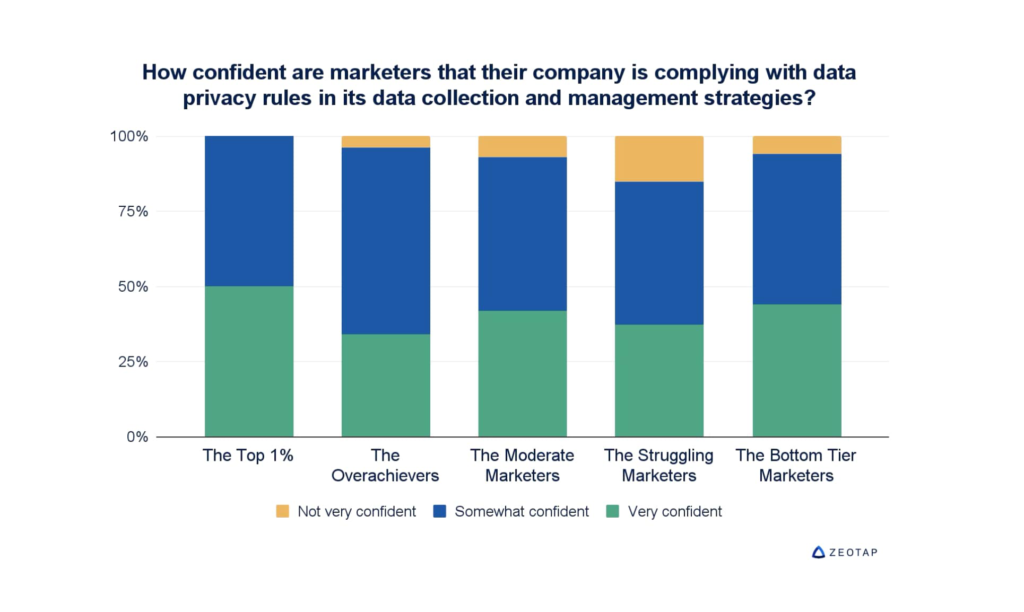
But there’s a problem. You’ll remember that earlier, we asked marketers whether they had a single view of the customer – what we see is that there’s a significant proportion of those marketers who don’t have a golden record who do express confidence about their data compliance. As we can see below, nearly one-third of Struggling Marketers who are confident about their data compliance lack a single customer view:
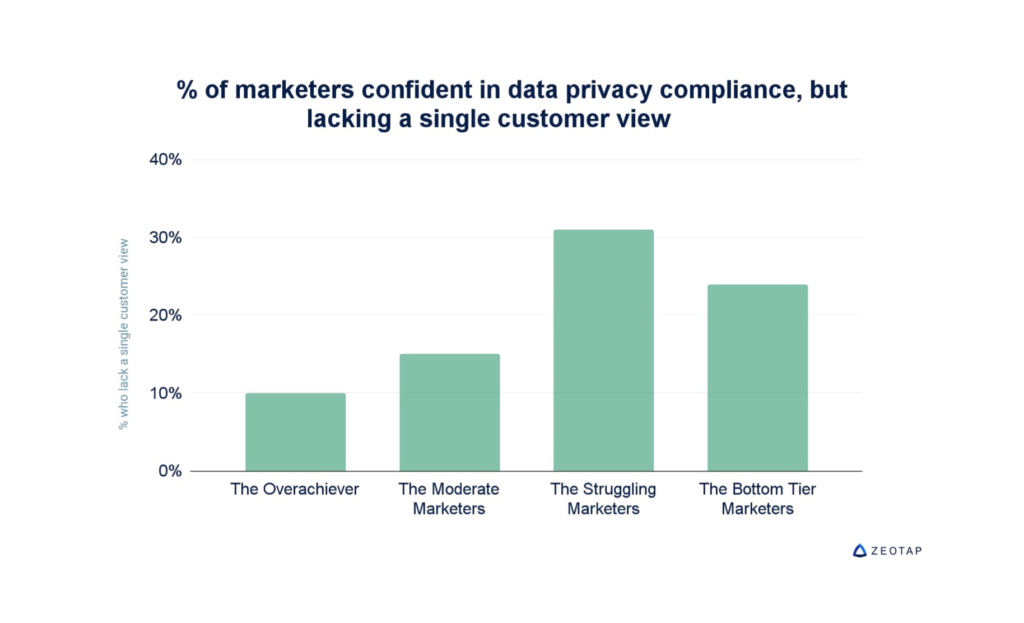
Why is this an issue? It goes back to the challenge of how data consent is captured in today’s multi-touch, multi-channel journeys: it’s highly likely that consent is captured across multiple tools (for example a consent management platform, a loyalty programme and email marketing), which means an individual can express (and withdraw) consent in many different places. Unless those choices are resolved, it’s likely that activating that data can fall foul of regulations.
This is why the single customer view is important: it means having a comprehensive view of a customer’s consent preferences across those multiple touchpoints and channels. This is why the marketer without a golden record might have misplaced confidence in their compliance.
Before you can feel any degree of confidence in your data privacy practices, you need to prioritise the consent journey just as much as the customer journey – and that starts with achieving a single view of the customer.
The way forward
Confidence aside, there are still some challenges ahead for all marketers when it comes to accessing and using their customer data to deliver the highest value to the customer. While it’s still early days, we should expect rapid acceleration of data-driven marketing practices as we enter a post-Covid world. For now, most of us are in the starting phase of creating the usable dataset – the proverbial golden record of a single customer view. As most marketers complete this foundational phase in 2022, we can expect the second stage to truly begin, in the form of the race for skilled talent and pioneering machine learning.
To uncover more data trends impacting marketing in 2022, download The Data Secrets of Successful Marketers research report.
Originally published on Business Reporter

Bookmark popover
Removed from bookmarks